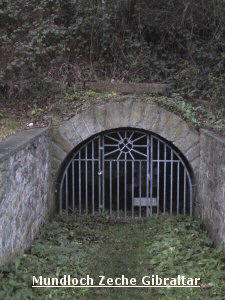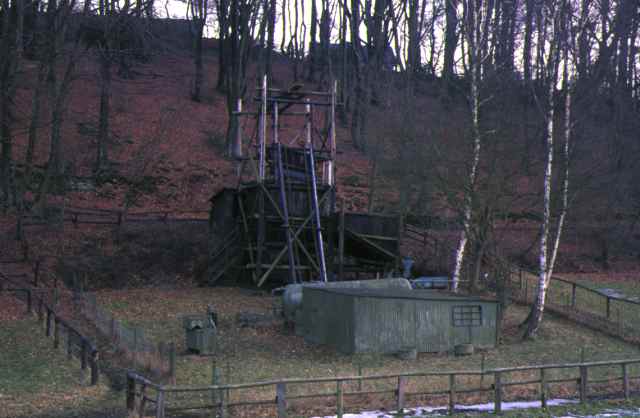|
The history of mining in the Ruhr area (Germany) |
|
The solar energy mentionned on the last page was very much sought-after. The first document appears in the town of Duisburg (Germany) in the year 1129 and it was about the right to extract hard coal. As I mentionned the early mining was quite simple. Because of the folding upwards the coal seams were positionned in a certain angle to the surface and made visible by the erosion. Because of this the hard coal could be extracted very easily by just digging ditches along the coal seams at the surface so that the coal just had to be collected after this. The regions where this was possible were the Mutten valley close to the city of Witten, the region around the city of Sprockhoevel and in the southern suburbs of Bochum and Essen - generally speaking all the regions close to the river of Ruhr and in the south of the Ruhr area (all locations and towns mentionned are in Germany). ~~~~~~~~~~~~~~~~~~~~~~~~~
("Thank you" for the picture to www.schlaegelundeisen.de; this is a tunnel of the former Gibraltar colliery !) These measures I mentionned before had the advantage that they were very simple, but unluckily they had some disadvantages, as well. First only a small amount of coal could be extracted from each ditch, second the success depended very much on the weather conditions - during rainfalls the ditches were set under water very fast and the coal production had to be stopped until they were dry again. In most cases the winter totally interrupted the production and because of this the miners - often part-time farmers - just extracted the coal as a job on the side. Because of the fact that the coal reserves at the surface have been used up very fast, the techniques to extract the coal with have changed: The first tunnels have been built in the early 17th century. Often these holes could not be called "tunnels" at all, mostly they were very small, not larger than necessary, not very stable and with a very bad supply with fresh air. The miners in these early times did not have to deal with the usual problems of today's hard coal mining industry like methane gas etc., because the coal that was close to the surface - except of some special cases - did not contain too much gas. A real improvement first started in the late 17th century when the gunpowder was developped and made it possible to blow up the rocks in order to build the tunnels that had to be built by hand in earlier times. This caused a rise in the tunnels' size and in the speed they were built in. If you want to know more about the conditions in the early mining industry in the Ruhr area you can read the book "Stein's journey through the hard coal mining in the Ruhr area" (this is the exact translation of the book's title). In this book Baron vom Stein's reports about his visits in the early Ruhr collieries are printed and by that you get more information about the positive or negative working conditions in the German hard coal industry of the 17th century. ~~~~~~~~~~~~~~~~~~~~~~~~~ Starting the deep coal mining
(Photo: The small colliery called Egbert in the Mutten valley close to Witten (Germany), thanks to our former YAHOO!-Group) By the time the coal reserves that could be reached by building tunnels ran low. To be able to go on with the mining, the miners had to go deeper under the surface. So in the early 19th century the change from the mining using tunnels to the deep coal mining started. This caused new problems: How to move downwards ? How to bring the tools down the shafts ? How to pass through the rocks close to the earth's surface being not stable because of rain water that poured in and destroyed the rocks during periods of frost in the winter ? How to obtain the roadways and gateroads from being flooded by water ? How to bring fresh air underground ? By a lot of "trial and error" and a lot of - sometimes painful - experiences these problems were solved. A very important step in this process was the development of the steam engine. This invention made it possible to use pumps for the water, the winding machines, other machines for producing electricity and warmth - it can be said that the development of the steam engine started the change from mining as a manual work with support from different kinds of animals to a modern, mechanized industry. A nice example showing the structures of the very early mining in the Ruhr area is the small Egbert colliery in the Mutten valley near Witten (Germany). You can see it in the photo above. This colliery is something very special. The coal production started in 1962 (it is true, it was in 1962) and finished in 1976. The colliery had a diagonal shaft from the surface to a depth of 135 metres. The picture shows how a colliery looked in the early years of hard coal mining in the Ruhr area: A small shaft tower, a shaft that is not too deep, a processing that was done by hand, where the raw coal and the waste material was divided - a fairly romantic situation that was sometimes quite dangerous because of a lack of safety regulations etc.. To experience more about the mining industry's progressing mechanization just click the button below.
|

